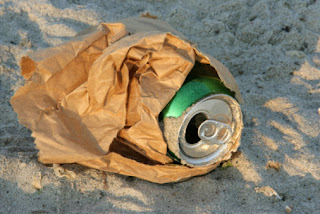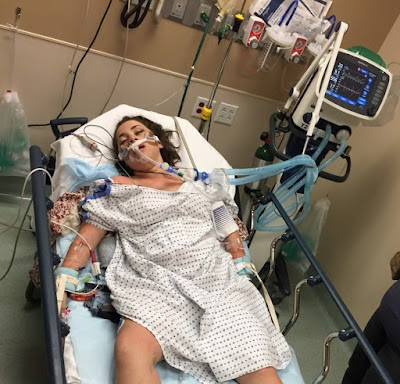'Risk', 'risky drinking' and young people: What does it all mean?
I was recently contacted by a journalist who is writing an article on alcohol and its related harms. I've been assisting her with the piece for a couple of weeks now and the last email contact was regarding terminology, particularly around the word 'risk' - what does that actually mean?
The messages we provide to the community around alcohol are based on guidelines developed by the National Health and Medical Research Council (NHMRC) - "an independent statutory authority that has the job of bringing together the best information available from worldwide medical research to advise Australians about their health choices". New guidelines were developed in 2009 and are about "reducing the risks to your health from drinking alcohol".
The previous alcohol guidelines were written in 2001 and classified particular drinking behaviour as either 'risky' or 'high risk'. It needs to be made clear that the new guidelines do not use these terms for, as the report says, "we now know that risk increases progressively - the more you drink, the greater the risk", but regardless these terms are still used regularly. As far as alcohol is concerned, these terms (as well as another - 'low risk') are usually defined in the following way:
The journalist's question was that if these were the definitions, in real terms what did they mean? What exactly were the 'health benefits' and what sort of harms are we talking about at the 'risky' and the 'high risk' levels? She wanted to know whether there was somewhere she could go to find out this information - did 'risky drinking' mean an actual number of drinks and what problems would you actually experience if you were a 'risky drinker'?
As an educator this terminology proves extremely problematic, particularly when working with young people. I have to be completely honest and say that I have never used the NHMRC guidelines in any of my presentations to young people as I believe they would raise more questions than answers and simply confuse the issues I am trying to raise with the audience. Unless terminology has real meaning and helps in the provision of practical information that is credible to young people we need to avoid using it as much as possible.
The science behind the guidelines is wonderful - the people that have put them together have done a great job but how do we use them in a practical way? The authors were certainly smarter this time and went for providing advice that talked about reducing the risk, instead of talking about risky and high risk, with Guideline 2 stating:
On a single occasion of drinking, the risk of alcohol-related injury increases with the amount consumed.
For healthy men and women, drinking no more than four standard drinks on a single occasion reduces the risk of alcohol-related injury arising from that occasion.
Most people would have no problems with the first part of this message - the more you drink, the greater the possibility of something going wrong - makes perfect sense. It's when you put numbers down that it starts to lose credibility for many. To say to a man in his 20s who likes to go the pub on the weekend with his friends that more than four drinks is a problem simply doesn't match some people's experience, they don't see any major problems and therefore the message is ignored. I completely understand why the numbers are there - certainly governments would insist on them being included to provide a concrete guide to what drinkers should or shouldn't be doing - but honestly, if they're going to be ignored by many drinkers, what's the point?
The message for those under 18 years of age is quite clear - "not drinking is the safest option". Once again, a clear message but not a particularly helpful one when a sizeable proportion of that group, particularly those aged between 15-17 years, do choose to drink at some time or another. It is also important to remember that the vast majority of those young people who do choose to drink don't experience major problems at the time they are drinking. Most of them drink a couple of drinks to socialise and have a wonderful time with their friends who are also drinking - where is this 'risk' that everyone is talking about? Certainly things can and do go wrong (I see that too many times), but for most they see very little major harm. Once again our credibility is shattered and they don't believe anything we say ...
Of course we must continue with the simple message of 'don't drink' as far as under 18s are concerned, emphasising that any drinking at this time in their lives not a good idea, but we also need to be realistic - some are going to drink alcohol so we also need to provide, in practical terms, where the greater danger is ...
To me, it's all about intent. If a young person is going out to 'get wasted' and write themselves off, that is certainly 'risky drinking'. It's not about a number - for a girl of 14, one drink gulped down before leaving for a party is certainly 'high risk'. I'm certainly not advocating that anyone underage should drink, but if you have a 17 year old young man who drinks three drinks over an evening at a gathering, there is definitely a different mindset there. Are there risks? Certainly there are, but we need to acknowledge that it's a different type of drinking and entails different potential problems.
As much as the media loves to go on about how bad our kids are when it comes to alcohol, I still maintain that the so-called 'risky drinkers' are a comparatively small group. They're loud, obvious and Today Tonight loves them, but they're not in the majority. It would be wonderful if we were able to sell the message of "not drinking is the safest option" to all of those under 18 years (remembering that we are actually seeing growing numbers of teens who classify themselves as 'non-drinkers') but that's not going to happen anytime soon!
If 'risky drinking' is all about intent (and I truly believe it is), we have to start working out why this small group of young people (and becoming younger) want to get 'wasted' on a regular basis. I'm not talking about the one-off experimentation where you find yourself throwing up after drinking too much. This is weekend after weekend, writing yourself off and damn the consequences! If we are able to find out what drives this behaviour, we may be able to start tailoring messages and interventions that can change their motivation to take part in such dangerous activity, or at the very least, keep them as safe as possible during this period of their lives.
The messages we provide to the community around alcohol are based on guidelines developed by the National Health and Medical Research Council (NHMRC) - "an independent statutory authority that has the job of bringing together the best information available from worldwide medical research to advise Australians about their health choices". New guidelines were developed in 2009 and are about "reducing the risks to your health from drinking alcohol".
The previous alcohol guidelines were written in 2001 and classified particular drinking behaviour as either 'risky' or 'high risk'. It needs to be made clear that the new guidelines do not use these terms for, as the report says, "we now know that risk increases progressively - the more you drink, the greater the risk", but regardless these terms are still used regularly. As far as alcohol is concerned, these terms (as well as another - 'low risk') are usually defined in the following way:
- Low risk: a minimal risk of harm. At this level there may be health benefits for some of the community
- Risky: risk of harm is increased beyond any possible benefits
- High risk: substantial risk of serious harm. Drinking further above this level and the risk continues to increase rapidly
The journalist's question was that if these were the definitions, in real terms what did they mean? What exactly were the 'health benefits' and what sort of harms are we talking about at the 'risky' and the 'high risk' levels? She wanted to know whether there was somewhere she could go to find out this information - did 'risky drinking' mean an actual number of drinks and what problems would you actually experience if you were a 'risky drinker'?
As an educator this terminology proves extremely problematic, particularly when working with young people. I have to be completely honest and say that I have never used the NHMRC guidelines in any of my presentations to young people as I believe they would raise more questions than answers and simply confuse the issues I am trying to raise with the audience. Unless terminology has real meaning and helps in the provision of practical information that is credible to young people we need to avoid using it as much as possible.
The science behind the guidelines is wonderful - the people that have put them together have done a great job but how do we use them in a practical way? The authors were certainly smarter this time and went for providing advice that talked about reducing the risk, instead of talking about risky and high risk, with Guideline 2 stating:
On a single occasion of drinking, the risk of alcohol-related injury increases with the amount consumed.
For healthy men and women, drinking no more than four standard drinks on a single occasion reduces the risk of alcohol-related injury arising from that occasion.
Most people would have no problems with the first part of this message - the more you drink, the greater the possibility of something going wrong - makes perfect sense. It's when you put numbers down that it starts to lose credibility for many. To say to a man in his 20s who likes to go the pub on the weekend with his friends that more than four drinks is a problem simply doesn't match some people's experience, they don't see any major problems and therefore the message is ignored. I completely understand why the numbers are there - certainly governments would insist on them being included to provide a concrete guide to what drinkers should or shouldn't be doing - but honestly, if they're going to be ignored by many drinkers, what's the point?
The message for those under 18 years of age is quite clear - "not drinking is the safest option". Once again, a clear message but not a particularly helpful one when a sizeable proportion of that group, particularly those aged between 15-17 years, do choose to drink at some time or another. It is also important to remember that the vast majority of those young people who do choose to drink don't experience major problems at the time they are drinking. Most of them drink a couple of drinks to socialise and have a wonderful time with their friends who are also drinking - where is this 'risk' that everyone is talking about? Certainly things can and do go wrong (I see that too many times), but for most they see very little major harm. Once again our credibility is shattered and they don't believe anything we say ...
Of course we must continue with the simple message of 'don't drink' as far as under 18s are concerned, emphasising that any drinking at this time in their lives not a good idea, but we also need to be realistic - some are going to drink alcohol so we also need to provide, in practical terms, where the greater danger is ...
To me, it's all about intent. If a young person is going out to 'get wasted' and write themselves off, that is certainly 'risky drinking'. It's not about a number - for a girl of 14, one drink gulped down before leaving for a party is certainly 'high risk'. I'm certainly not advocating that anyone underage should drink, but if you have a 17 year old young man who drinks three drinks over an evening at a gathering, there is definitely a different mindset there. Are there risks? Certainly there are, but we need to acknowledge that it's a different type of drinking and entails different potential problems.
As much as the media loves to go on about how bad our kids are when it comes to alcohol, I still maintain that the so-called 'risky drinkers' are a comparatively small group. They're loud, obvious and Today Tonight loves them, but they're not in the majority. It would be wonderful if we were able to sell the message of "not drinking is the safest option" to all of those under 18 years (remembering that we are actually seeing growing numbers of teens who classify themselves as 'non-drinkers') but that's not going to happen anytime soon!
If 'risky drinking' is all about intent (and I truly believe it is), we have to start working out why this small group of young people (and becoming younger) want to get 'wasted' on a regular basis. I'm not talking about the one-off experimentation where you find yourself throwing up after drinking too much. This is weekend after weekend, writing yourself off and damn the consequences! If we are able to find out what drives this behaviour, we may be able to start tailoring messages and interventions that can change their motivation to take part in such dangerous activity, or at the very least, keep them as safe as possible during this period of their lives.




Comments
Post a Comment